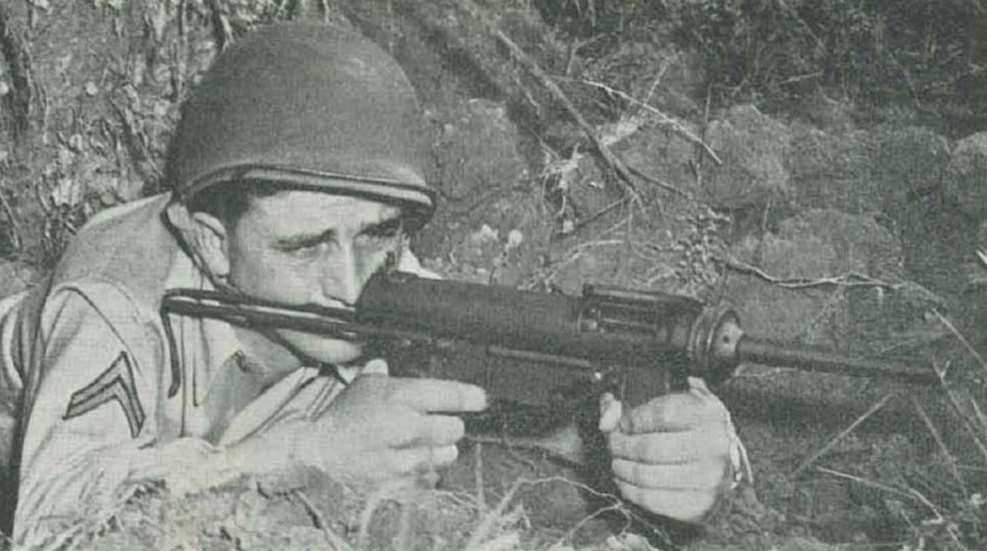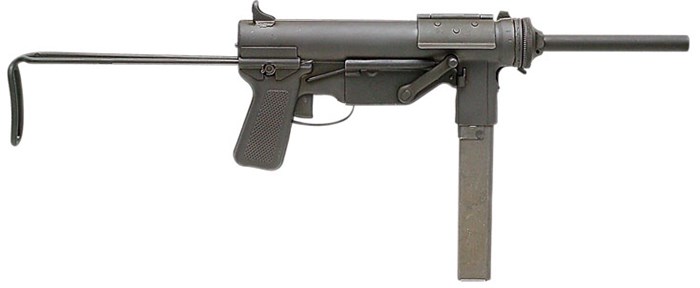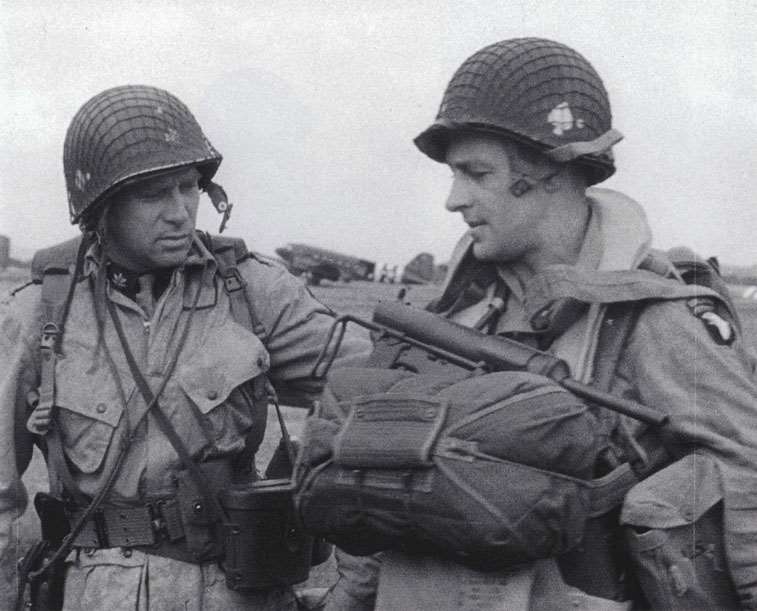
The American Rifleman staff had an early and up- close look at the then-new M3 submachine gun. Not long thereafter, the “Grease Gun” would make its combat debut with the American Airborne in Normandy.
This article was first published in the July 1943 issue of American Rifleman.
A new and better submachine gun, weighing only eight pounds (less magazine) and so small that it can be taken down and the parts will fit in a soldier's pockets, is another menace for the Axis. It is known as the M3 submachine gun and weighs four pounds less than the Thompson submachine gun. Of .45 caliber, this new gun can be used for rapid fire, full-automatic or as a single-shot weapon like the Garand and the carbine by simple manipulation of the trigger. Feed is by a magazine which holds 30 rounds of ammunition. The ammunition is the standard caliber .45 ball cartridge.
The straight blowback principle is employed in the design of this gun. The rate of fire, when using it as a full automatic, is purposely held down to the comparatively slow rate of 450 rounds per minute. The bolt has a fixed firing pin and is so constructed that the excess energy from its forward movement is expended simultaneously with the explosion of the propellent charge in the cartridge. This feature is in large part responsible for the fact that the muzzle of this gun does not climb during rapid fire as do other comparable weapons. This greatly improves its accuracy.

It can be used either as a pistol or a gun for it has a skeleton wire stock that slides onto the gun when not in use as such. Field stripped for convenient stowing about the person, this weapon can be assembled in less than 15 seconds. Field stripped, it can be packed in a box 12 ¾ inches x 7 ¾ inches x 3 1/8 inches. The barrel is only eight inches in length and no tools are necessary when assembling. 
Design is such that all moving parts are fully enclosed so as to keep out, dirt and water, and there are no projecting moving parts that might endanger the user. One of these enclosing parts covers the ejection port and acts as safety when the gun is not in use. It is hinged for quick action and when snapped into the safety position, a lug locks the bolt in in forward position. In the cocked position this lug hold, the bolt back off the sear, thereby holding both sear and trigger ineffective.

One of the greatest accomplishments in the design of this sub machine gun comes from its simplicity of manufacture. There are only 25 component parts and 73 pieces (less magazine). All parts are metal and manufacture is principally from steel stampings.

Necessity is the mother of invention, and the necessity back of the development of the M3 submachine gun was a bottleneck in the production of the present types being produced by the Ordnance Department. The real bottleneck in this production schedule, as in many others, was machine tools. This situation became acute in July 1942, when it became apparent that production capacity of the type required had run short for these machine tools were needed elsewhere. This new weapon takes submachine gun manufacture out of this class, and it can be contracted to plants with unlimited capacity. These are factories with power presses, of which there are many. Heretofore, this type of plant has been hard put to find war items which they were in a position to make. Production by stamping is simple and fast.

Development efforts produced the first model within four months and the first model was tested by Infantry, Armored Forces, Parachute Troops, Amphibious Troops and Tank Destroyer Commands. The consensus was that the M3 was superior in all respects to every comparable foreign weapon. Less than six months later the new submachine gun was in production in spite of the that it represents a complete and radical departure from all other models. In the past fifteen years, the cost of machine guns has dropped from approximately $200 to something like $40, while the present M3 submachine gun is being manufactured for less than $20 and with a 50 percent cut in man-hours and a 25 percent reduction in machine tool requirements.
Additional Reading:
Video—Have This Old Gun: U.S. M3A1 Grease Gun
The M3 and M3A1 Grease Gun





































